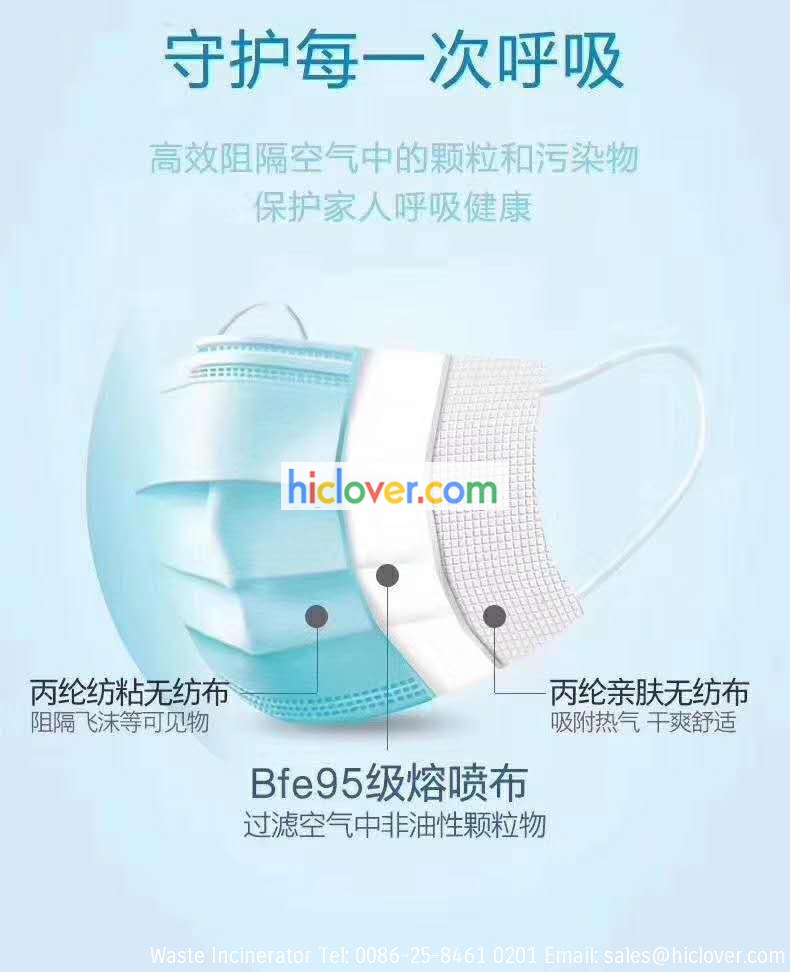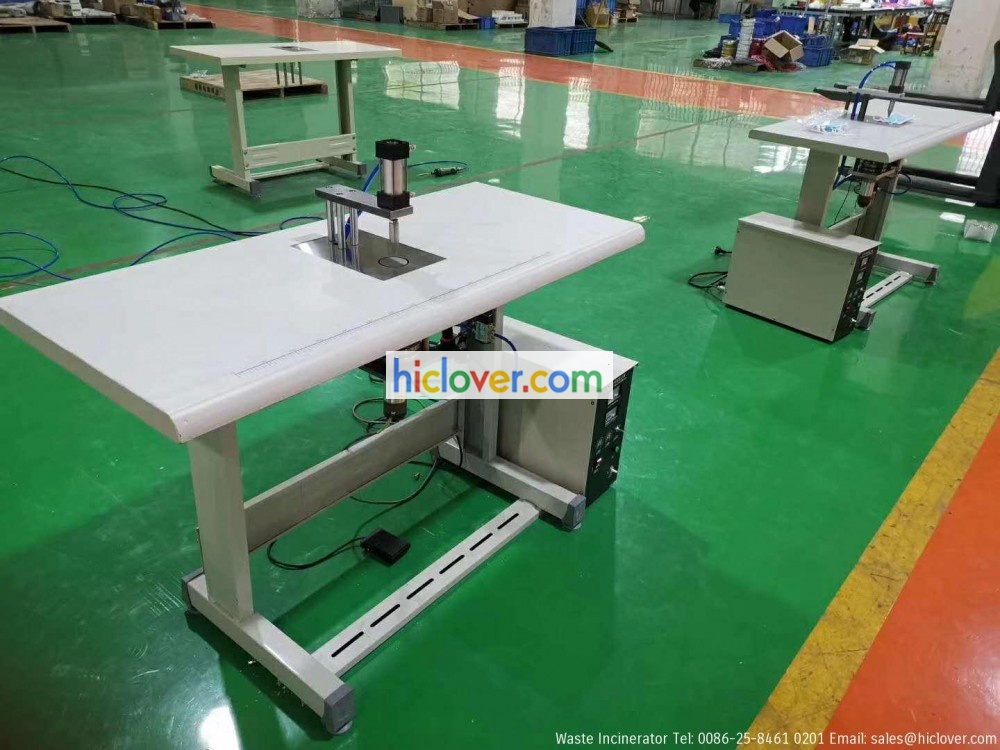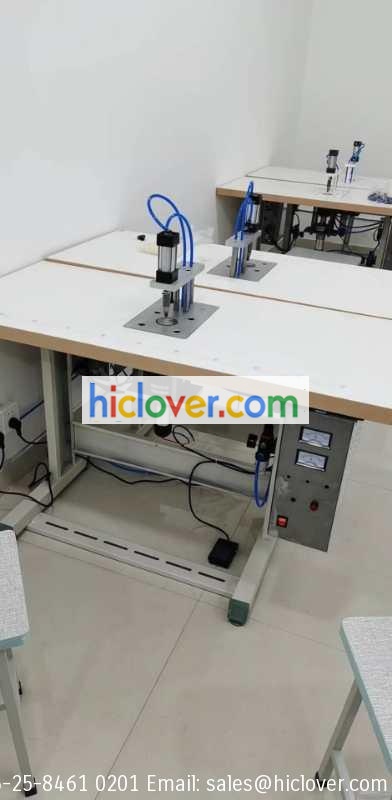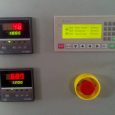Doubel Combustion Chamber
All Incinerators are Doubel Combustion Chamber with One Fuel Burner Each. After Burner Technology for Completely Combustion and Cleaner World.
Read MoreHigh Temperature Incineration
Temperature Range 800 Degree to 1200 Degree in Combustion Chamber. Temperature Thermocouple Monitor and Controller. High Quality Fire Brick and Refactory Cement.
Read MoreGet Lastest News
There are latest incinerator news like technical, public news, business tender for medical waste incinerator,animal incineration, pet cremation
Read MoreNanjing Clover Medical Technology Co.,Ltd.
Email: sales@clover-incinerator.com | Tel: +86-25-8461 0201
Regular model incinerator for market with burning rate from 10kgs to 500kgs per hour and we always proposal customer send us their require details, like waste material, local site fuel and power supply, incinerator operation time, etc, so we can proposal right model or custom made with different structure or dimensions.
Incinerator Model YD-100 is a middle scale incineration machine for many different usage: for a middle hospital sickbed below 500 units, for all small or big size family pets (like Alaskan Malamute Dog), for community Municipal Solid Waste Incineration, etc. The primary combustion chamber volume is 1200Liters (1.2m3) and use diesel oil or natural gas fuel burner original from Italy.
Latest Post
Incinerator Crematory
Basic Info.
Additional Info.
Product Description
Nanjing Clover Medical Technology Co., Ltd., Neighborhood in Nanjing city, China.
FFP2 Breathing mask machine

平面口罩机参数:
Semi-Automatic Mask Machine
l Power supply: 3.3KW mono phase
l Mask Size: 175mm*80-100mm (two or three layers)
l Nonwoven (GMS): 10-50g
l Capacity: 120 to 150pcs/min
l Dimension(L*W*H):3800mm*500mm*1400mm
l Net Weight: about 1000kg

焊接机参数:
Welding Machine
l Capacity: 5 to 10pcs/min
l Power supply: 8.5KW mono phase
l Compressed Air connection: 0.5 to 0.7Mpa
l Dimension(L*W*H): 900mm*650mm*1380mm
l Net weight: approx. 50kg

KN95口罩机参数:
N95 Mask Machine
l Capacity: 130 to 160pcs/min
l Dimension(L*W*H): 1037*855*1780
l Power Supply 15.3kw mono phase
l Net Weight: approx.: 1500kg

Tel: +86-25-8461 0201
Website: www.hiclover.com
Email: [email protected]
Email: [email protected]
2020-04-06
Programme on Small Scale Medical Waste Incinerators for Primary Health Care Clinics in South Africa
TABLE OF CONTENTS
- OBJECTIVE OF THE PROGRAMME 4
- STRUCTURE OF THE PROGRAMME 4
- COLLABORATORS INVOLVED IN THE PROGRAMME 4
- STAKEHOLDERS INVOLVED IN THE PROGRAMME 4
- LABORATORY TRIALS 5
- FIELD TRIALS 13
1. OBJECTIVE OF THE PROGRAMME
The objective of the programme is to select technical standards acceptable for tender specification purposes that will enable the South African Department of Health to obtain the equipment and services necessary for the primary health care clinics to perform small-scale incineration for the disposal of medical waste.
2. STRUCTURE OF THE PROGRAMME
The test programme is being carried out in stages, as follows:
Phase 1 A scoping study to determine the obligation of the various parties and
consensus on the test standards and boundaries of the laboratory tests. The criteria for accepting an incinerator on trial was accepted by all parties involved.
Phase 2 Laboratory tests with a ranking of each incinerator and the choice of the incinerators to be utilised in the field trials.
Phase 3 Completion of field trials, to assess the efficacy of each incinerator under field conditions.
Phase 4 Preparation of a tender specification and recommendations to the DoH for the implementation of a continuing incineration programme.
This document provides feedback on stages 2 and 3 of their work.
3. COLLABORATORS INVOLVED IN THE PROGRAMME
SA Collaborative Centre for Cold Chain Management SA National Department of Health
CSIR
Pharmaceutical Society of SA World Health Organisation UNICEF
4. STAKEHOLDERS INVOLVED IN THE PROGRAMME
The next stakeholders participated in the steering committee:
- Dept of Health (National & provincial levels) (DoH)
- Dept of Occupational Health & Safety (National & provincial levels)
- Dept of Environmental Affairs & Tourism (National & provincial levels) (DEAT)
- Dept of Water Affairs & Forestry (National & provincial levels) (DWAF)
- Dept of Labour (National & provincial levels) (DoL)
- National Waste Management Strategy Group
- SA Local Government Association (SALGA)
- SA National Civics Organisation (SANCO)
- National Education, Health and Allied Workers Union (NEHAWU)
- Democratic Nurses Organisation of SA (DENOSA)
- Medecins Sans Frontieres
- SA Association of Community Pharmacists
- Mamelodi Community Health Committee
- Pharmaceutical Society of SA
- CSIR
- UNICEF
- WHO
- SA Federation of Hospital Engineers
International visitors:
- Dr Luiz Diaz – WHO Geneva and International Waste Management , USA
- Mr Joost van den Noortgate – Medecins Sans Frontieres, Belgium
5. LABORATORY TRIALS
5.1. Objective of the laboratory trials
- Rank the performance of submitted units to the following criteria:
y Occupational safety
y Impact on public health from emissions
y The destruction efficiency
y The usability for its available staff
- The panel of experts for the ranking consisted of a:
y Professional nurse; Mrs Dorette Kotze from the SA National Department of Health
y Emission specialist; Dr Dave Rogers from the CSIR
y Combustion Engineer; Mr Brian North from the CSIR
5.2. Incinerators received for evaluation
| Name used in report | Model no. | Description | Manufacturer |
| C&S Marketing
incinerator |
SafeWaste Model Turbo
2000Vi |
Electrically operated fan supplies combustion air
— no auxiliary fuel |
C&S Marketing cc. |
| Molope Gas incinerator | Medcin 400 Medical
Waste Incinerator |
Gas-fired incinerator | Molope Integrated
Waste Management |
| Molope Auto incinerator | Molope Auto Medical
Waste Incinerator |
Auto-combust incinerator – uses wood
or coal as extra fuel to ease incineration |
Molope Integrated
Waste Management |
| Name used in report | Model no. | Description | Manufacturer |
| PaHuOy
incinerator |
Turbo Stove | Auto-combust unit,
with no additional fuel or forced air supply |
Pa-Hu Oy |
5.3. Emission testing: laboratory method
Sampling of emissions followed the US-EPA Method 5G dilution tunnel method for stove emissions. Adjustments to the layout were created to account for fires extending up to 0.5 m above the tip of the incinerator and the fall from large pieces of ash. Emissions were extracted into a duct for isokinetic sampling of particulate emissions. The sampling arrangement is revealed by a schematic in Figure 1. A photograph of the performance over the Molope gas fired incinerator unit is shown in Figure 2.
All tests were conducted according to specified operating procedures. The directions provided by the supplier of the equipment were followed in the case of the C&S Marketing Unit. No operating procedures were provided with the Molope Gas, Molope auto-combustion and PaHuOy units. These procedures were established by the CSIR personnel with their prior experience together with information provided by the supplier.
Test facilities were set up at the CSIR and measurements were carried out under an ISO9001 system using standard EPA test procedures or modifications made at the CSIR.
Figure 1. Schematic diagram of the laboratory set-up
Figure 2:Photograph of air intake sampling hood over Molope gas incinerator
5.4. RANKING RESULTS OF THE LABORATORY TRIALS
With the criteria listed under section 4.1 above, the incinerators were ranked as followed:
| Molope gas-fired
unit |
Molope wood-fired
unit |
C&S electric
unit |
PaHuOy wood-fired
unit |
|
| Safety | 6.8 | 4.8 | 5.5 | 3.3 |
| Health | 5.5 | 3.5 | 4.3 | 2.3 |
| Destruction | 9 | 2 | 6 | 1 |
| Usability | 2 | 3 | 3 | 5 |
| Average | 5.8 | 3.3 | 4.7 | 2.9 |
5.5. EMISSION RESULTS OF THE LABORATORY TRIALS
Quantitative measurements were used to rank the components Concerning destruction efficiency as well as the potential to produce hazardous emissions.
Conformance to the South African Department of Environmental Affairs and Tourism’s (DEAT) recommended guidelines on emissions from Large Scale Medical Waste Incinerators is outlined in Table 1. The dimensions are listed1 in Table 2.
Table 1: Summary qualitative results
| Parameter Measured | Units | Molope
Gas-fired |
Molope
Wood-fired |
C&S
Electric |
PaHuOy
Wood-fired |
SA DEAT
Guidelines |
| Stack height | m | × | × | × | × | 3 m above
closest building |
| Gas velocity | m/s | × | × | × | × | 10 |
| Residence time | s | × | × | × | × | 2 |
| Minimum combustion
temperature |
ºC | 4 | × | × | × | > 850 |
| Gas combustion
performance |
% | × | × | × | × | 99.99 |
| Particulate emissions | mg/Nm3 | 4 | × | 4 | × | 180 |
| Cl as HCl | mg/Nm3 | × | 4 | 4 | × | < 30 |
| F as HF | mg/Nm3 | 4 | 4 | 4 | 4 | < 30 |
| Metals | mg/Nm3 | 4 | × | × | 4 | < 0.5 and
< 0.05 |
1 Emission concentrations are reported in accordance with the South African reporting requirements, ie, normalized to Normal Temperature (0
oC) and Stress (101.3 kPa) and adjusted to a minimal concentration of
8% of CO2 on a dry gas basis. If a measurement dropped below the detection limit for the method is it reported as the detection limit or as N.D., ie, not detectable.
Table 2: Detailed quantitative results
|
Parameter Measured * |
Components |
Molope gas |
Molope Automobile |
C&S |
PaHuOy |
SA Process Guide1 |
Comments |
|
Stack height |
m |
1.8 |
1.8 |
1.9 |
0.3 |
3 m over nearest building |
None of these unite includes a stack. If it’s over the respiration zone of the operator it provides some protection from exposure to smoke. |
|
Gas velocity |
m/s |
0.8 |
0.5 |
1.1 |
0.5 |
10 |
Gas velocities vary across the pile to get the Molope gas, Molope auto-combustion, as well as the PaHuOy units. |
|
Home time |
s |
0.4 |
0.7 |
0.6 |
0.4 |
two |
Home time is taken to be the total combustion time, and the highest achievable |
|
Minimum combustion zone temperature |
oC |
800 -900 |
400 – 650 |
600 – 800 |
500 – 700 |
> 850 |
Molope auto-combustion temperatures are predicted to be higher as the middle of the combustion zone isn’t expected to be at the measurement location. |
|
CO2 at the stack tip |
% vol |
2.64 |
3.75 |
4.9 |
3.25 |
8.0 |
Actual emission concentrations are less than the values reported here, which can be normalized to 8% CO2 and standard temperature and pressure for reporting purposes. They’re lower between 4 to 8 times. |
|
Gas |
percent |
99.91- |
98.8 -98.4 |
99.69- |
98.9 |
99.99 |
Most accurate measurement in |
| Combustion | 99.70 | 99.03 | the duct where mixing of exhaust | ||||
| efficiency | gases is complete. Results of two
trials. |
||||||
|
Particulate emissions entrained in exhaust gas |
mg/Nm3 |
102 |
197 |
130 |
338 |
180 |
The total emissions will be the sum of the both entrained and un- entrained particulates. Emissions are lower than expected for these units and this is attributed to the absence of raking which is the significant source of particulate emissions from incinerators with no emission control system. |
|
Particulate fall- out |
mg/Nm3 |
42 |
105 |
n.d. |
n.d. |
– |
Large pieces of cardboard and paper ash rained from the emissions. Totalling 0.8 to 2 g over a +/- two minute period. |
|
Soot in particulates |
percent |
42.2 |
58.1 |
48.7 |
84.8 |
– |
Correlates directly with gas combustion efficiency |
1 Emission concentrations are reported in accordance with the South African reporting requirements, ie, Normalized to Normal Temperature (0
oC) and Stress (101.3 kPa) and adjusted to a minimal concentration of
8% of CO2 on a dry gas basis. If a measurement dropped below the detection limit for the method is it reported as the detection limit or as N.D., ie, not detectable.
|
Parameter Measured * |
Components |
Molope gas |
Molope Automobile |
C&S |
PaHuOy |
SA Process Guide1 |
Comments |
|
% ash remaining from medical waste |
percent |
14.8 |
12.9 |
15.6 |
21.7 |
– |
Measurement of destruction efficiency of the incinerator. Typical industrial units operate at 85-90% mass reduction. PaHuOy is lower because of the melting and unburnt plastic. This is expected because of the variability of the feed composition. |
|
F as HF |
mg/Nm3 |
< 6 |
< 1 |
<2 |
< 1 |
< 30 |
Fluoride not found in this waste. |
|
Arsenic (As) |
mg/Nm3 |
< 0.2 |
< 0.2 |
< 0.2 |
< 0.2 |
0.5 |
Arsenic isn’t anticipated as a solid. |
|
Lead (Pb) |
mg/Nm3 |
< 0.4 |
< 0.4 |
< 0.4 |
< 0.4 |
0.5 |
Lead not anticipated in waste |
|
Cadmium (Cd) |
mg/Nm3 |
< 0.2 |
< 0.2 |
< 0.2 |
< 0.2 |
0.05 |
Sensitivity of the x-ray procedure is adequate for ranking. Greater sensitivity not searched for this particular trial. |
|
0.5 |
mg/Nm3 |
Chromium relative to iron ranges between 12 and 25% that’s consistent with stainless steel needles |
Manganese (Mn) |
< 0.1 |
0.3 |
0.3 |
< 0.1 |
|
0.5 |
mg/Nm3 |
Manganese might be a component in the stainless steel needle. |
Nickel (Ni) |
< 0.1 |
0.3 |
< 0.1 |
< 0.1 |
|
0.5 |
mg/Nm3 |
Nickel may be a component in the needle. |
Antimony (Sb) |
< 0.2 |
< 0.2 |
< 0.2 |
< 0.2 |
|
0.5 |
mg/Nm3 |
Not anticipated in this waste. |
Copper (Cu) |
< 0.5 |
< 0.5 |
< 0.5 |
< 0.5 |
|
0.5 |
mg/Nm3 |
Lower sensitivity because of copper in the sample blanks. May be background in the analytical equipment. |
Tin (Sn) |
< 0.2 |
< 0.2 |
< 0.2 |
< 0.2 |
|
0.5 |
mg/Nm3 |
Tin not anticipated in this waste. |
Vanadium (V) |
< 0.1 |
< 0.1 |
0.4 |
< 0.1 |
|
0.5 |
mg/Nm3 |
Vanadium may be present in stainless steel. Sensitivity of the x-ray procedure is adequate for ranking. Greater sensitivity not searched for this particular trial. |
|
|
|
|
The principal conclusions drawn from the trials are as follows: |
|
|
mg/Nm3 |
:: All four components can be used to render medical waste non-infectious, and to destroy syringes or leave needles unsuitable for reuse. |
::The largest potential health hazard arises from the emissions of smoke and soot. (the combustion efficiency of all units lies outside the |
regulatory standards). The threat to health can be reduced by training operators to avoid the smoke or by installation of a chimney at the site. |
:: The emissions from small scale incinerators are expected to be lower compared to those from a wood fire, but higher than a traditional fire-brick- |
lined multi-chambered incinerator. |
:: Incomplete combustion, and the substantial formation of smoke at low elevation rendered the PaHuOy unit unsuitable for field trials. Figure 3 |
|
below shows this unit in a trial burn. Molten plastic flowed from |
mg/Nm3 |
the incinerator, blocked the primary combustion air feed ports, and burnt out of the unit. |
|
|
|
|
|
|
|
mg/Nm3 |
The CSIR conducted a quantitative trial in the field for gas combustion efficiency, temperature profiles and mass destruction rate on the Molope Vehicle wood-fired unit at the Mogale Clinic. |
|
The results of this trial are compared to the laboratory trial results below: |
|
Temperatures were higher but for a shorter time and this was |
correlated with the sort of wood available to the clinic. The fuel was burnt out until the medical waste was destroyed completely and this resulted in lower temperatures, lower combustion efficiency and higher emissions while burning the waste. |
|
prior to complete ignition of the waste. |
mg/Nm3 |
|
It was concluded that: |
|
|
|
|
|
these recommendations are made as the result of the laboratory trials: |
mg/Nm3 |
::A detailed operating manual must be provided with each unit. |
Adequate training in the performance of these units must be provided, especially focussed on security issues. |
::: It is advised that the height of the exhaust port on all units be |
addressed. In order to facilitate the dispersion of emissions and reduce the exposure risk of these operators. |
::The suppliers of the incinerators must provide instructions for the safe handling and disposal of ash. |
|
5.6. MAIN FINDINGS OF THE LABORATORY TRIALS
After completion of the laboratory trials, the project steering committee recommended that the Molope Gas and C&S Marketing units be filed for field testing. The Molope Vehicle was recommended for field testing on the condition that the manufacturer modified the ash grate in order to prevent the spillage of partially burnt needles and syringes.
The objective of the field trials was to acquire information in the field and assess the strengths and weaknesses of all the incinerators during use at primary health care clinics.
A participative decision making process was used for the trials. It was based on specialist technical analysis by the CSIR and the National Department of Health as well as involvement in the trials by experienced end users and participating advisors. All decisions were made by the Steering Committee, which consisted of representatives of stakeholders in the clinical and medical waste disposal process.
The Provinces in which the trials were done selected clinics for the field trials. The standards set by the Steering Committee for the choice of the practices were the following:
Figure 3: Photo of PaHuOy incinerator during trial burn
y No medical waste removal
5.7. COMPARISON OF THE FIELDS TRIALS WITH THE LABORATORY TRIALS
y No existing incineration
y No transport
The practices that were chosen were as follows:
- Waste loading: Disposable rubber gloves were observed in addition to needles syringes, glass vials, bandages, dressings, and paper w
- Temperatures and combustion efficiency: The same performance in gas combustion efficiency was obtained for wood .
- Emissions: Large amounts of black smoke were observed and this was correlated directly to cooling of the unit as the wood fuel was exhausted
incinerator, wood-fired.
- Destruction efficiency: The destruction efficiency was similar to that in the laboratory measurem
- Usability: The unit is difficult to control as the result of the variability of the quality of wood
- Acceptability: the smoke was not acceptable to the clinic, the community, or the local
Information concerning the field trials as well as questionnaires were provided to the coordinators from the participating provinces.
- The performance with fuel alone indicates that laboratory trial data can be used to predict emissions in the
- The Molope Auto unit is too difficult to control for the available staff and fuel at the
The team in the field consisted of the operator, supervisor and inspector (coordinator). The manufacturer of the incinerators did the training of the operators.
5.8. RECOMMENDATIONS FROM THE LABORATORY TRIALS
The questionnaires used during the trials were set in order to obtain information with respect to the standards set for the ranking of the incinerators in accordance with functionality in the field. The questionnaires were obtained from the clinics at two-weekly intervals.
Questions with regard to the standards were the following:
y Volume and thickness
y Colour
y Odour
5.9. RECOMMENDATIONS FROM THE STEERING COMMITTEE
y Total
y Partial
y Minimal
y Residue articles
6. FIELD TRIALS
6.1. OBJECTIVE OF THE FIELD TRIALS
y Operator
y Nurse
6.2. CLINIC SELECTION
y Head of the clinic
y Local Authority representative
y Community leader
- Location must be rural or under-serviced with
During the trials the practices were visited and the incinerators evaluated by members of the Steering Committee and the CSIR as well as Dr L Diaz from WHO, Mr M Lainejoki from UNICEF and the coordinator from the National Department of Health.
- It must be in a high-density population area
- Acceptable environmental conditions must prevail
- Community acceptance must be obtained
- Operator skill level to be used must be at a level of illiteracy
Type of incinerator at the clinic: Molope Auto-Combustion (Fired with timber )
- Steinkopf Clinic – Northern Cape Province – Gas incinerator
- Marydale Clinic – Northern Cape Province – Gas incinerator
- Mogale Clinic – Gauteng Province – Auto combustion
- Chwezi Clinic – KwaZulu-Natal Province – Gas incinerator
- Ethembeni Clinic- KwaZulu-Natal Province – Auto-combustion electrical
Difficulty in controlling the operating temperature and preventing smoke emissions made this incinerator user unfriendly.
As a result of the heavy, black smoke emission the unit wasn’t acceptable to the community.
|
Two
timber, coal also an option)
3
6.3. COORDINATION OF THE TRIALS
(Uses Electricity)
Great
- Safety (occupational and public health)
- Destruction capability
- Usability
- Community acceptability
Great
Great
Great
Combust Incinerator
The team in the field consisted of the operator, supervisor and inspector (coordinator). The manufacturer of the incinerators did the training of the operators.
The questionnaires used during the trials were set so as to obtain information with regard to the criteria set for the ranking of the incinerators in accordance with performance in the field. The questionnaires were received from the clinics at two-weekly intervals.
Questions with regard to the criteria were the following:
A. SAFETY (occupational and public health)
- Smoke Emission
y Volume and thickness
y Colour
y Odour
- Ash Content
- Are the filled sharps boxes and soiled dressings stored in a locked location while waiting to be incinerated?
B. DESTRUCTION CAPABILITY
- Destruction Rate
y Complete
y Partial
y Minimal
y Residue content
C. USABILITY (for the available staff)
- Can the incinerator be used easily?
- Is the process of incineration safe?
- Has training been successful?
- Is protective clothing such as gloves, goggles, dust masks and safety boots available?
D. COMMUNITY ACCEPTABILITY
- What is the opinion of the following persons on the use of the incinerator?
y Operator
y Nurse
y Head of the clinic
y Local Authority representative
y Community leader
During the trials the clinics were visited and the incinerators evaluated by members of the Steering Committee and the CSIR as well as Dr L Diaz from WHO, Mr M Lainejoki from UNICEF and the coordinator from the National Department of Health.
6.4. QUESTIONNAIRE RESULTS
6.4.1. MOGALE CLINIC
Type of incinerator at the clinic: Molope Auto-Combustion (Fired with wood)
Figure 4 & 5: Molope Auto wood-fired incinerator during field trials at Mogale clinic
A. SAFETY (occupational and public health)
- The process of incineration with this unit was considered by the operator, supervisor and the inspector as unsafe because there is no protective cage around the During the process the incinerator becomes very hot and this could result in injury to the operator.
- The smoke emission of this incinerator had a volume and thickness which was heavy and black, with a distinct unpleasant odour, and was considered This could cause a pollution problem.
B. DESTRUCTION CAPABILITY
- The needles and vials were not completely destroyed but were rendered unsuitable for re-use.
- The soft medical waste was completely destroy
C. USABILITY
Difficulty in controlling the operating temperature and avoiding smoke emissions made this incinerator user unfriendly.
D. COMMUNITY ACCEPTABILITY
As a result of the heavy, black smoke emission the unit was not acceptable to the community.
6.4.2. ETHEMBENI CLINIC:
Figure 6: C&S Marketing Auto Combust Electrical Incinerator At Ethembeni Clinic
Type Of Incinerator: C&S Auto-Combustion (Uses an electrically actuated fan)
A. SAFETY (occupational and public health)
- The operator, supervisor and inspector considered this incinerator easy to operate with no danger to the Removal of the ash from the drum for disposal in a pit is, however, considered difficult, as the drum is heavy. Removal of the incinerator lid before it has been allowed to cool has been identified as a potential danger to the operator.
- Emission of smoke from this incinerator was not considered ex The volume and thickness was evaluated as moderate with no pollution experienced.
B. DESTRUCTION CAPABILITY
- The needles and vials were not completely destroyed but were rendered unsuitable for re-use.
- The soft medical waste was completely destroy
C. USABILITY
Considered user friendly by operator, supervisor and inspector.
D. COMMUNITY ACCEPTABILITY
The incinerator was accepted by the community and was not considered to be harmful.
6.4.3. CHWEZI CLINIC, MARYDALE CLINIC AND STEINKOPF CLINIC:
Type of incinerator: Molope Gas incinerator
Figure 7: Molope Gas incinerator during field trials at Marydale clinic
A. SAFETY (occupational and public health)
- The operator, supervisor and inspector considered this incinerator easy to operate with minimal danger to the
- Smoke emissions were not excessive and were reported to be minim
B. DESTRUCTION CAPABILITY
- Sharps not completely destroyed but were rendered unsuitable for re-use.
- Soft medical waste completely destroy
C. USABILITY
This incinerator was considered user friendly.
D. COMMUNITY ACCEPTABILITY
The incinerator was accepted by the community and was not considered to be harmful.
6.5. RANKING
| INCINERATOR | RANKING |
| Molope Gas | 1 |
| C&S Auto-Combustion (Uses electrical fan) |
2 |
| Molope Auto- Combustion (Fired with
wood, coal also an option) |
3 |
6.6. OUTCOME OF THE FIELD TRIALS
| Incinerator | Safety | Destruction Capability | Usability | Community Acceptability |
| Molope Gas | Good | Good | Good | Good |
| C&S Auto- Combustion
(Uses Electricity) |
Good |
Good |
Good |
Good |
| Molope Auto-
Combust Incinerator |
Un-Acceptable | Good | Un-Acceptable | Un-Acceptable |
Animal Carcass Incinerators
Basic Info.
Additional Info.
Product Description
2011 year is an important base for us. We reach developed country market and stabilize our older customers. Our incinerator use in Southeast Asia, incineration burner, incineration room, incineration chien de 50 kilos, incineration disposal of solid waste, incineration equipment maker, Central Asia, Europe, Middle East, Africa and Australia, etc.. Clover Incinerator has become among the famous and largest incinerator provider throughout the world.
Key Features: * All versions with Dual combustion chamber. * Stainless Steel chimney/stack, long life. *according to order * High fever, long life of incinerator. * Free or minimal installation on site. *according to order * New Design for pet animal cremation company. * One year warranty on incinerator and parts in stock.
| Item | Customer Request | Example |
| Application Scope | |
Hospital, Pet Crematory, Slaughter House, Laboratories, School, Community, etc. if for animal/pet, indicate animal size like: cat, dog, cattle, etc |
| What kind of waste? | ____, _____% ____, _____% ____, _____% |
Medical waste, dead animal, Municipal Waste, etc(detail name) or nature percent if for animal/pet, indicate animal size like: cat, dog, cattle, etc |
| Quantity Request | 01.02.03^…unit |
|
| Budget | $US Dollar. |
|
| Operating Time | The staff work Hours per day. Our incinerator can work up to around 18 hours per day. |
|
| Realization Date of project | In ___ year | |
| Waste Output Capacity per Day? | |
1000kgs Per Day^ |
| Request waste burn rate | Capacity: 100kgs Per hour^ | |
| Request waste feed capacity | Capacity: 100kgs per feed^ | |
| Whether Natural Gas Supply Local? | Yes or No. | |
| Local Power | If 380V and 220V valid? | |
| Product Installation Destination | |
Country or City name |
| DestinationSeaport name? | To check sea freight charge. |
|
| Customer | End-Customer, Agent, Government. |
|
| Method of contract | Tender or Negotiation | |
| Date of Tender limit | ||
| How did you know our company? | ||
| Other request or information | |
Incinerator (TS20 PLC)
Basic Info.
Additional Info.
Product Description
TS model PLC incinerator is newest design for waste treatment, include medical waste, animal cremation and other solid waste. This equipment quality structural for kinds of website, animal pet incinerator for earnings,animal shelter incinerator available,animal waste cremator,animal waste furnace,animal waste incinerator for 50 kg,animal waste incinerator with heat exchanger,like hospital, environmental department, animal cremation agencies, etc.. CLOVER Incinerator supply updated models with dual combustion chamber and smoke filter room with refractory lines, and the combustion chamber temperature up to 1200 deg C.
| Items/Model | TS10(PLC) | TS20(PLC) | TS30(PLC) | TS50(PLC) |
| Burn Rate | 10 kg/hour | 20 kg/hour | 30 kg/hour | 50 kg/hour |
| Feed Capacity | 20kg | 40kg | 60kg | 100kg |
| Control Mode | PLC | PLC | PLC | PLC |
| Combustion Chamber | 100L | 210L | 330L | 560L |
| Internal Dimensions | 50x50x40cm | 65x65x50cm | 75x75x60cm | 100x80x70cm |
| Secondary Chamber | 50L | 110L | 180L | 280L |
| Smoke Filter Chamber | Yes | Yes | Yes | Yes |
| Feed Mode | Manual | Manual | Manual | Manual |
| Voltage | 220V | 220V | 220V | 220V |
| Power | 0.5Kw | 0.5Kw | 0.5Kw | 0.7Kw |
| Oil Consumption (kg/hour) | 5.4–12.6 | 7.8–16.3 | 10.2–20 | 12.1–24 |
| Gas Consumption (m3/hour) | 6.2–11.4 | 8–15.7 | 9.8–20 | 9.9–26.1 |
| Temperature Monitor | Yes | Yes | Yes | Yes |
| Temperature Protection | Yes | Yes | Yes | Yes |
| Oil Tank | 100L | 100L | 100L | 100L |
| Feed Door | 30x30cm | 45x40cm | 55x50cm | 70x55cm |
| Chimney | 3Meter | 3Meter | 5Meter | 5Meter |
| Chimney Type | Stainless Steel | Stainless Steel | Stainless Steel | Stainless Steel |
| 1st. Chamber Temperature | 800–1000 degree | 800–1000 degree | 800–1000 degree | 800–1000 degree |
| 2nd. Chamber Temperature | 1000-1200 degree | 1000-1200 degree | 1000-1200 degree | 1000-1200 degree |
| Residency Time | 2.0 Sec. | 2.0 Sec. | 2.0 Sec. | 2.0 Sec. |
| Gross Weight | 1500kg | 2200kg | 3000kg | 4500kg |
| External Dimensions | 140x90x120cm | 160x110x130cm | 175x120x140cm | 230x130x155cm |


















